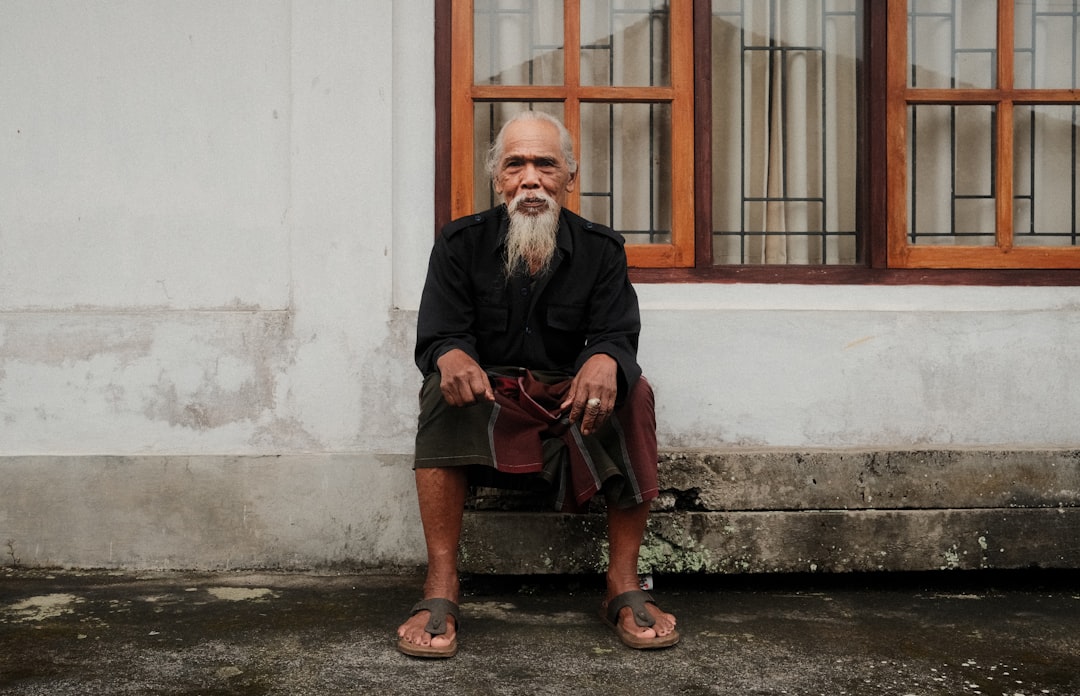Comparing Visual Investments Photography AI and Presentation Design
Comparing Visual Investments Photography AI and Presentation Design - Evaluating the Cost Curve Photography Budgets Meet AI Generation
The integration of AI-generated visuals into standard workflows necessitates a careful examination of evolving photography budget landscapes. Both those procuring images and those creating them face the task of navigating this shifting economic terrain. Artificial intelligence tools offer a path that often appears less expensive and more efficient than traditional photography methods. However, the simplicity of this cost advantage is debatable; it brings into focus complex issues including the less obvious expenditures, such as processing power or energy consumption, and significant questions surrounding the authenticity and distinctiveness of machine-generated content. As organizations and individuals assess their options, merely comparing upfront figures is insufficient. A comprehensive valuation is required, one that considers quantifiable financial outcomes alongside intangible factors like perceived quality, originality, and brand impact. This dynamic visual ecosystem demands a fresh perspective on how value is defined and pursued when AI is a key player in image creation.
Here are some considerations regarding where resources allocated for visual production intersect with generating images using AI:
Achieving highly specific visual fidelity, whether for likeness in portraits or aligning with a precise brand aesthetic, often requires a significant amount of prompt iteration and subsequent manual post-processing. This introduces workflow complexities and human labor costs that aren't always factored into initial generation estimates.
Producing consistently high-quality, production-ready imagery at scale necessitates access to robust computing infrastructure or potentially expensive platform subscriptions. This constitutes an ongoing operational expenditure that can increase substantially based on usage volume and the technical demands of the desired outputs.
Navigating the ambiguous and rapidly evolving legal landscape surrounding content created by AI, particularly regarding intellectual property rights and the source data used for training, introduces potential compliance and liability risks. Evaluating and managing these factors requires dedicated effort and can lead to unforeseen legal or indemnity-related expenses.
Obtaining access to AI models capable of reliably generating images in highly specific artistic styles or maintaining nuanced visual consistency across multiple outputs can require licensing fees or even the development of custom model variations. These specialized costs are often less apparent when only considering general-purpose generation platforms.
Despite the apparent speed of initial output generation, the necessary process of evaluating, selecting, refining, and integrating potentially large volumes of generated images to find suitable final assets represents a significant, time-consuming human resource cost within the overall production workflow.
Comparing Visual Investments Photography AI and Presentation Design - When AI Headshots Suffice and When Portraits Matter for kahma.io
When deciding on visual representation, especially for online presence, the choice between utilizing readily available AI-generated images and commissioning professional photography requires careful consideration of the underlying purpose. Technologies emerging in this space, like those offered by platforms such as Kahma.io, enable the creation of high-resolution, often presented at 8K quality, digital headshots from existing source images with speed and apparent ease. This can serve a practical function for quickly populating standard digital profiles or where a uniform, technically clean image is the primary requirement. The efficiency and accessibility of generating such visuals can be compelling for routine or high-volume applications.
However, a significant distinction remains in the capacity to capture genuine human expression and a sense of presence. While AI can render technically accurate and "lifelike" features based on extensive training data, the depth of personality, subtle emotions, and unique spirit that a skilled portrait photographer can artfully capture through interaction and their creative vision is a different proposition entirely. Traditional portraiture is an investment in a collaborative process that aims to create an image with authentic connection and emotional resonance. For situations demanding a visual representation that conveys trust, builds a personal brand built on genuine identity, or requires an image with true character beyond mere resemblance, the value captured by professional photography often goes beyond what current AI techniques readily deliver. The decision ultimately weighs the expediency and functional utility of quick digital generation against the potential for deeper, more personal, and impactful visual storytelling.
Observations from cognitive science experiments completed by early 2025 suggest that human gaze fixation and recall duration might be shorter when presented with machine-generated visages compared to photographs of actual individuals. This phenomenon could potentially stem from subtle digital artifacts or a lack of the micro-expressions present in authentic human images that escapes current synthetic models.
Beyond the explicit service fee for a traditional photographic session, particularly in a corporate context, the financial outlay often encompasses less visible costs. These can include technical logistics support on location, specialized grooming or styling services for subjects, and the acquisition of usage licenses dictating precisely where and how the final images can be deployed, collectively escalating the total expenditure considerably compared to base rates.
As of investigations conducted around mid-2025, current AI image generation models still demonstrably struggle to replicate the nuanced directional focus of human eyes or the subtle asymmetry inherent in genuine smiles. This technical limitation can sometimes result in generated likenesses that observers perceive as less authentic or engaging than traditionally captured portraits.
While the energy footprint of generating a single digital headshot might appear minimal, the computational energy expenditure required to produce high-resolution visual assets for a substantial number of individuals can aggregate into a significant demand on cloud infrastructure resources. Under certain conditions, this cumulative energy usage could potentially approach or even surpass the environmental impact associated with a large-scale on-site traditional photoshoot carried out over a full day.
Neuroimaging studies utilizing techniques like functional magnetic resonance imaging (fMRI) indicate that the neural pathways activated when the human brain processes certain highly photorealistic AI-generated faces may differ from those engaged by real human faces. Increased activity in cortical regions associated with discerning patterns or detecting anomalies has been noted, possibly contributing to an observer's subconscious unease or a diminished sense of trust or connection.
Comparing Visual Investments Photography AI and Presentation Design - Shifting Visual Investment Strategies Presentation Design in a Hybrid Era
Within the hybrid landscape of presentation design, the uptake of artificial intelligence tools is prompting a recalculation of visual investment strategies. This extends notably to how images, whether photographic or machine-made, are sourced and utilized. The rise of AI-generated visuals directly challenges established photography practices, particularly regarding the critical need for authenticity and emotional depth when crafting compelling narratives for audiences. Though AI promises efficiency for creating standard visuals, capturing true character and nuanced expression, often key to building trust and connection in presentations, frequently requires the distinct skill set of traditional portrait photography. This establishes an inherent tension: balancing the appeal of automated cost savings with the enduring value of genuinely resonant visual communication. As this visual ecosystem shifts, the conversation must move beyond mere expenditure to weigh the deeper impact and perceived authenticity of the imagery used. Ultimately, creating truly impactful presentations might necessitate a strategic blend, employing AI where practical utility is paramount and prioritizing human creative input for visuals where authentic engagement is essential.
Analytics gathered from virtual and hybrid presentation platforms by mid-2025 indicate a noticeable increase in viewer attention decay on slides that rely on overly repetitive or generic visual templates. This contrasts with presentations where visuals are more unique or specifically contextualized, with observations suggesting a potentially significant difference in audience engagement levels.
Leading presentation software solutions available around 2025 incorporate artificial intelligence to analyze content and suggest visual compositions, sometimes automatically generating variations (drawing from either AI models or stock libraries) optimized for concurrent viewing across diverse screens—laptops, mobile devices, and larger in-room displays—as is common in hybrid meeting environments.
Studies on audience perception conducted by early 2025 propose that presentations which mix high-quality, authentic photographic images (such as professional portraits) with clearly identifiable generic or AI-generated visual elements on slides might inadvertently undermine the perceived credibility of the speaker or organization. This phenomenon could potentially be linked to subtle cognitive dissonance experienced during hybrid viewing scenarios.
Analysis of corporate hybrid presentations up to mid-2025, using detailed viewer engagement metrics, suggests a correlation between strategic investment in distinctive, higher-quality visual assets—like professional photography employed for critical narrative points—and measurable positive effects on audience information recall and the likelihood of subsequent desired actions.
Novel presentation design methodologies emerging by 2025 advocate for a deliberate variation in the degree of visual realism utilized. This strategy suggests leveraging diagrams or stylized graphics, potentially created by AI, for presenting complex data, while reserving authentic photography or commissioned illustrations for moments aimed at building emotional connection or emphasizing human elements. This approach is informed by empirical observations of how different visual styles are processed effectively across the varied viewing conditions inherent in hybrid setups.
Comparing Visual Investments Photography AI and Presentation Design - The Role of Authentic Imagery Among AI Tools by June 2025
As of June 2025, the integration of artificial intelligence into image creation has profoundly impacted the standing and necessity of authentic imagery. The rapid advancement of AI models means that machine-generated visuals are increasingly photorealistic, making it challenging for observers to reliably differentiate them from pictures captured through traditional photography. This situation has surprisingly led to a resurgence in valuing genuine photographs, emphasizing the distinct contribution of human creativity and the ability to record unique, unrepeatable moments. Research into "AIthenticity" suggests that how authentic an AI image is *perceived* to be can influence how people react to it. While AI offers considerable efficiency and scalability in producing visuals, there remains an ongoing discussion about the ethical implications and a fundamental philosophical contrast between algorithmic output and human artistic expression. Consequently, authentic imagery maintains a crucial, albeit evolving, role in conveying trustworthiness and facilitating deeper connections, presenting a continuous challenge in determining where automated generation serves adequately versus where human-centric capture remains indispensable for impact.
Investigations into automated tools attempting to reliably flag machine-generated images based on intrinsic digital tells report reaching a plateau around this period; achieving robust, universally effective digital authentication remains an elusive goal, underscoring the persistent technical hurdle.
Observational studies tracking visual asset markets through mid-2025 suggest a discernible uptick in the market valuation, or 'authenticity premium,' attached to photographic works demonstrably originating from human effort, particularly for applications where viewer trust or personal connection is paramount.
Legal tracking indicates a notable rise in intellectual property disputes directed at image synthesis platforms by June 2025, often centered on claims that outputs unintentionally mirror specific stylistic traits, compositions, or even individual likenesses identifiable within their vast training corpus, thereby challenging the originality and authenticity of the generated material.
Behavioral assessments conducted by early 2025 utilising quantitative scoring methods show that human observers tend to attribute higher ratings for 'trustworthiness' and 'genuineness' when presented with photographic portraits exhibiting naturally occurring minor variations or asymmetries, contrasting with the often too-perfect symmetry observed in many AI-synthesized likenesses.
A growing contingent within the professional photography community is reported, by mid-2025, to be incorporating sophisticated digital mechanisms – including AI-enhanced watermarking, detailed metadata enrichment, and distributed ledger timestamping – into their workflows, primarily as a means to assert and provide verifiable evidence of their images' human authorship against the backdrop of proliferating synthetic visuals.
More Posts from kahma.io:
- →7 Best Practices for Enhancing PowerPoint Images Using AI Upscaling Tools
- →7 Tips for Enhancing Your May 2024 Calendar Photos with AI Image Processing
- →A Step-by-Step Guide to Creating High-Resolution Profile Photos for Professional Resumes in 2024
- →Enhancing Your Professional Image 7 AI-Powered Tools for Optimizing CV Headshots
- →Converting PDF Documents to High-Resolution Images A Technical Guide to Preserving Quality in 2024
- →7 Essential Photo Enhancement Tips for Creating Professional Calendar Images in 2024

